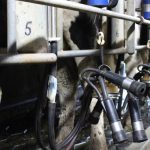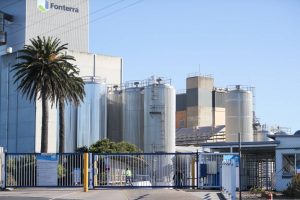
A Joint Transition Team (JTT) has been appointed to recommend options for transformational change, which will form part of the plan’s report to be published by the end of the year.
The team will report to the Australian Dairy Plan Committee.
Membership of the JTT is:
Shirley Harlock, Victoria.
Bruce Donnison, Victoria/Tasmania.
Adam Jenkins, Victoria.
Lauren Finger, Victoria.
Wes Judd, Queensland.
Michele Lawrence, Tasmania.
Greg McNamara, NSW.
Malcolm Holm, NSW.
Reform of current dairy industry structure and advocacy arrangements was highlighted as a priority issue at workshops.
Australian Dairy Plan chairman John Brumby said it was number one issue during consultation meetings.
United Dairyfarmers of Victoria president Paul Mumford said it appeared the appointees had the appropriate skills.
“But really industry needs to know a little bit more information on their qualifications and how they were chosen,” Mr Mumford said.
He said he felt the members had the ability to move the $14 billion industry forward.
“It’s a mammoth task, not only for the chairs, but also John Brumby and the JTT,” he said.
“They are not small issues we are dealing with and dairy has only one go to fix the industry.”
But Western Australian farmers have expressed some disappointment there are no representatives of that state on the JTT.
South Australian dairy farmers are also not represented on the JTT.
WAFarmers dairy section president Michael Partridge said he believed two WA dairy farmers had nominated to be members of the JTT.
“I know one of them and they would have been a very good representative for WA,” Mr Partridge said.
When it called for JTT nominations last month the ADPC said applicants “should be able to demonstrate experience in leadership, business, strategic transformation and the dairy supply chain”.
Membership of the JTT, which has five men and three women members, will “reflect diversity in gender and experience”, it said previously.
While admitting to being privately disappointed one of the two WA nominations had not been included on the JTT, Mr Partridge said he had read the email naming the JTT members, noted there was no Western Australian and “moved on”.
“WA dairy farmers will still have their views made known (to the ADPC) through WAFarmers and Dairy Australia,” Mr Partridge said.
Mr Brumby said the Australian Dairy Plan committee had opened up the application process for membership of this taskforce to ensure that anyone with relevant experience had the opportunity to be considered.
“We received more than 30 applications, all of an extremely high standard,” he said.
“From these applications, we’ve appointed a strong team which can bring an enormous amount to this process along with an independent view.
“Ensuring that dairy has the most effective, agile and well-resourced structure is an absolutely crucial element for us to get right.
“We can learn from other industries which have successfully reformed their organisational structures.
“We all agree on the potential for dairy to speak more clearly with a strong and unified voice, to direct combined resources to industry priorities, to be more nimble in addressing challenges, to be more streamlined and remove duplication.”
























